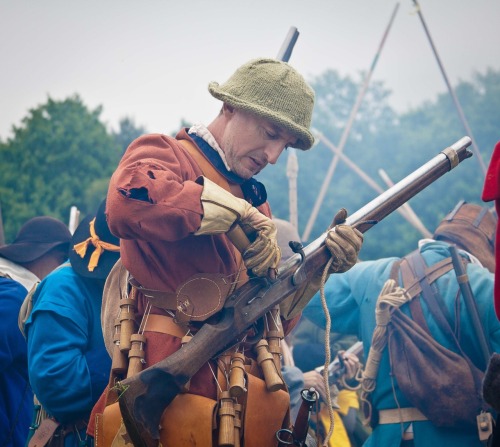The drawn battle of Ashby Street had, as predicted, proved a strategic setback for the Roundheads, as their scheme to invest Felpersham by occupying the villages around the city had been thwarted.
During the early summer there was little fighting, aside from the odd skirmish as opposing patrols of dragoons or cavalry encountered one another in the villages between the two major settlements.
In June 1643 the Royalist commander in the county, the Earl of Grantham, received orders from Prince Rupert to muster all the Royalist cavalry and best of the infantry in Borsetshire and to join the King's offensive that culminated in the storming of Bristol the following month.

A Parliamentary Dragoon prepares his carbine whilst in the background pikemen prepare to fight
The garrison of Felpersham was thus reduced to largely local militia, whose terms of service meant they would not leave the county. Sensing an opportunity whilst the King's main field army pursued the Earl of Essex after the relief of Gloucester, the Borsetshire Parliamentarians decided to march on Felpersham once more.
The harvest was in and the Roundheads were on the march as the local Royalist commander, Sir Charles Moncrief, weighed up his options. His problem was that were not enough troops to man the fortified villages and earthworks that protected Felpersham without the absent regiments that were fighting with the King. He did know however, the direction of the Roundhead thrust, thanks to intelligence from his scouts.
Accordingly, in mid September of 1643 Moncrief led his men to meet the Roundhead advance. The subsequent battle was fought near the village of St Johns Parva.
A game of DBR is scheduled for this evening
No comments:
Post a Comment